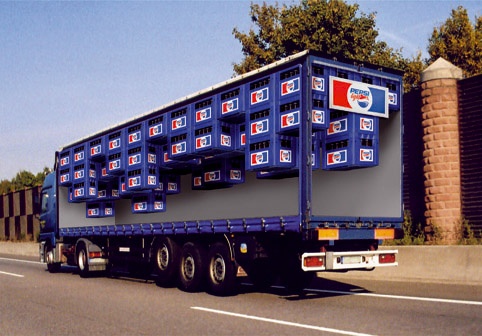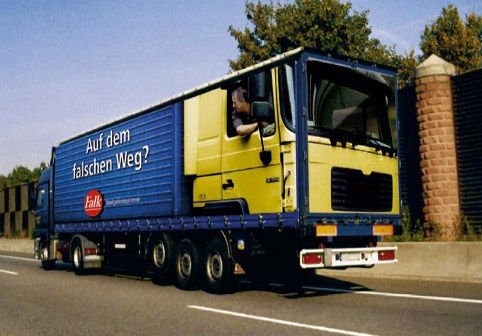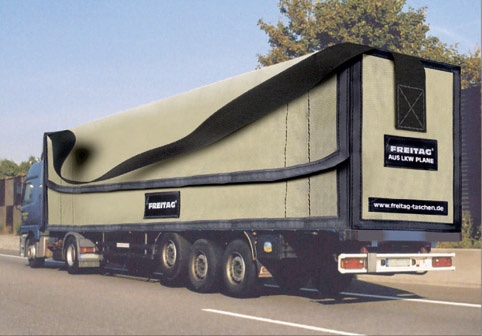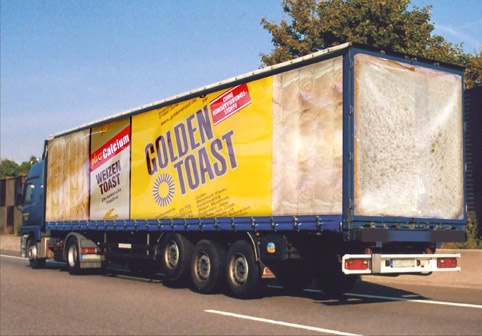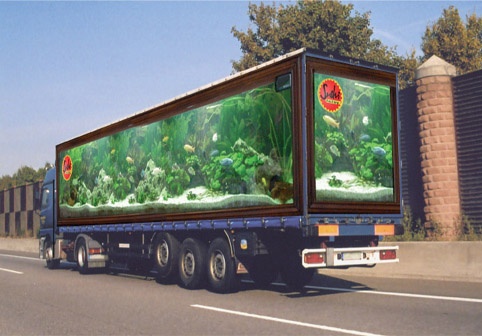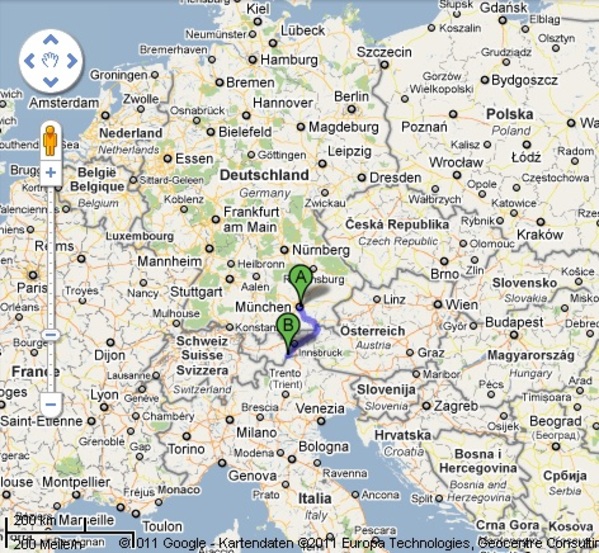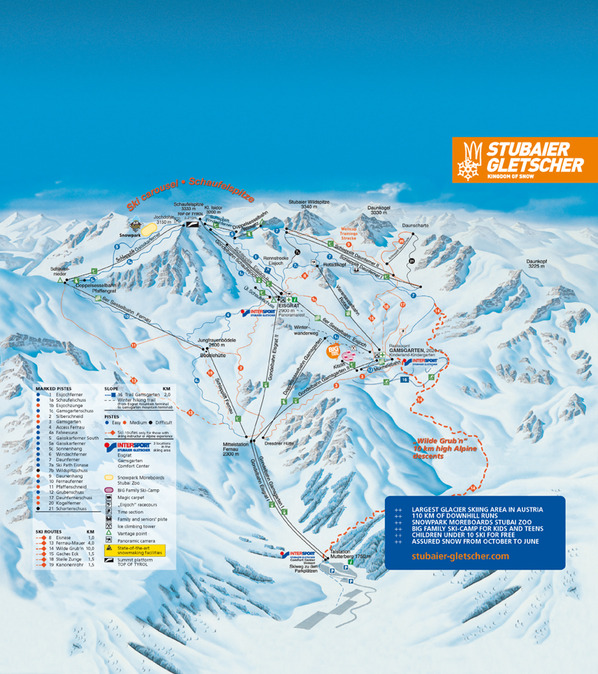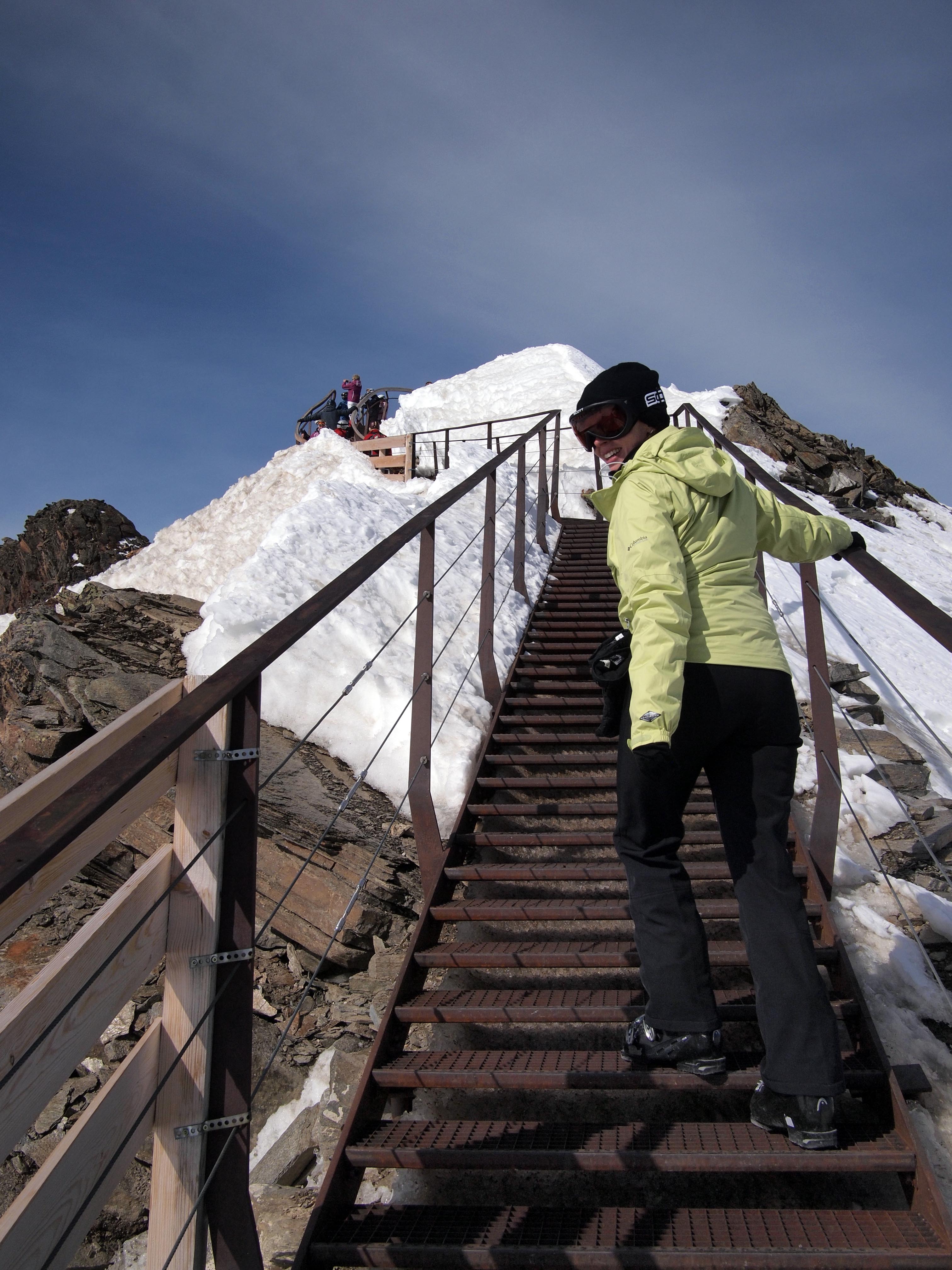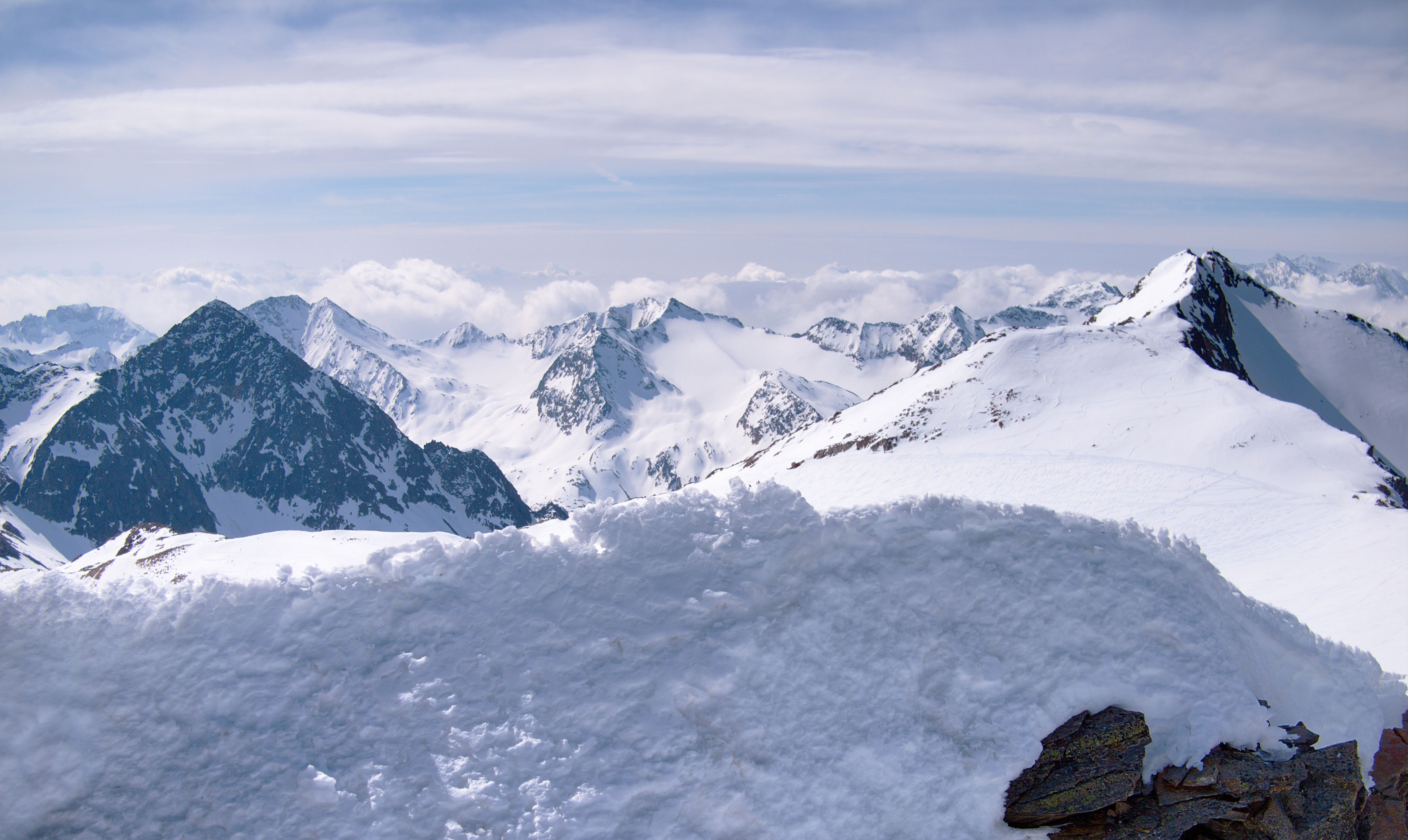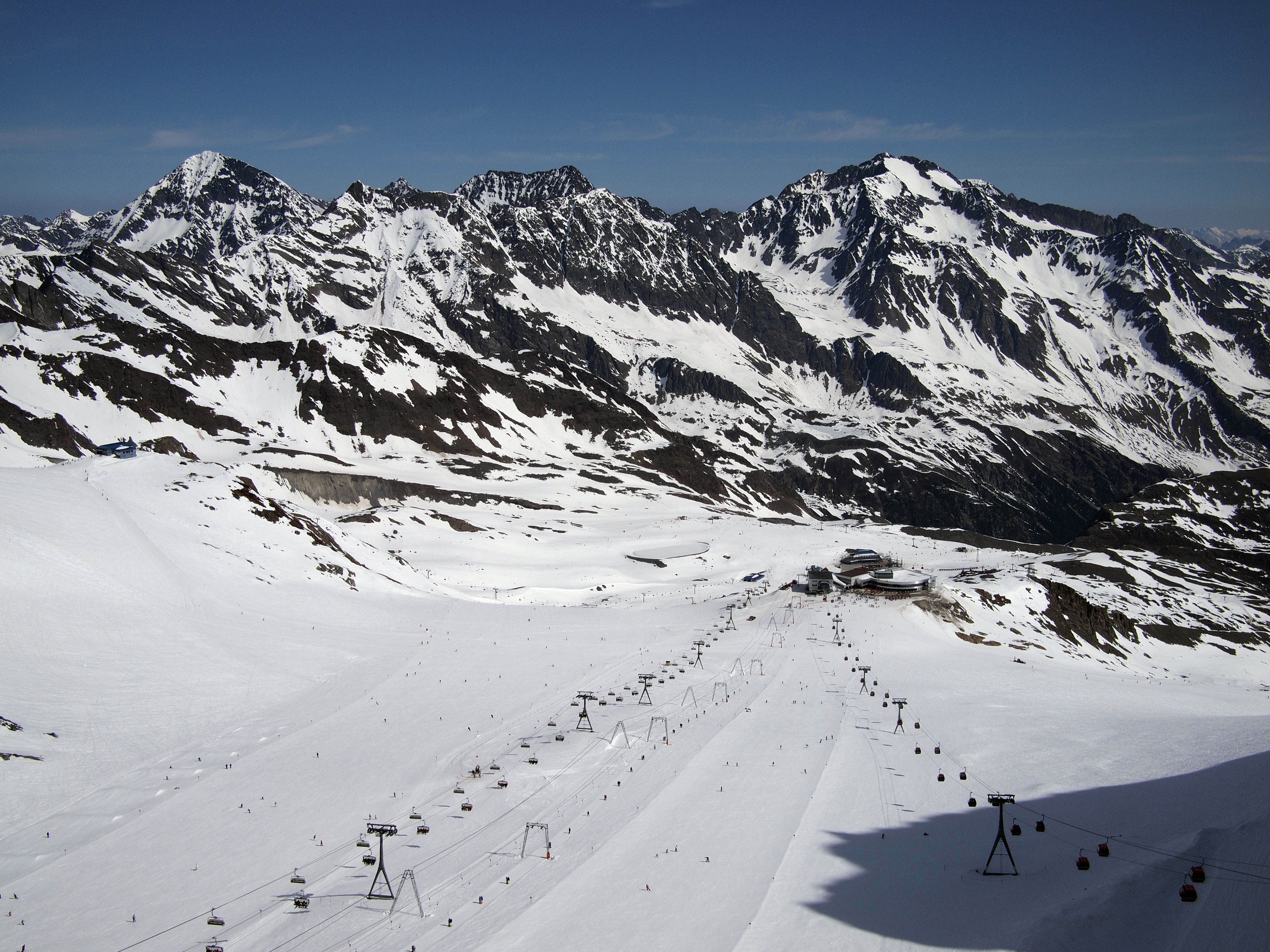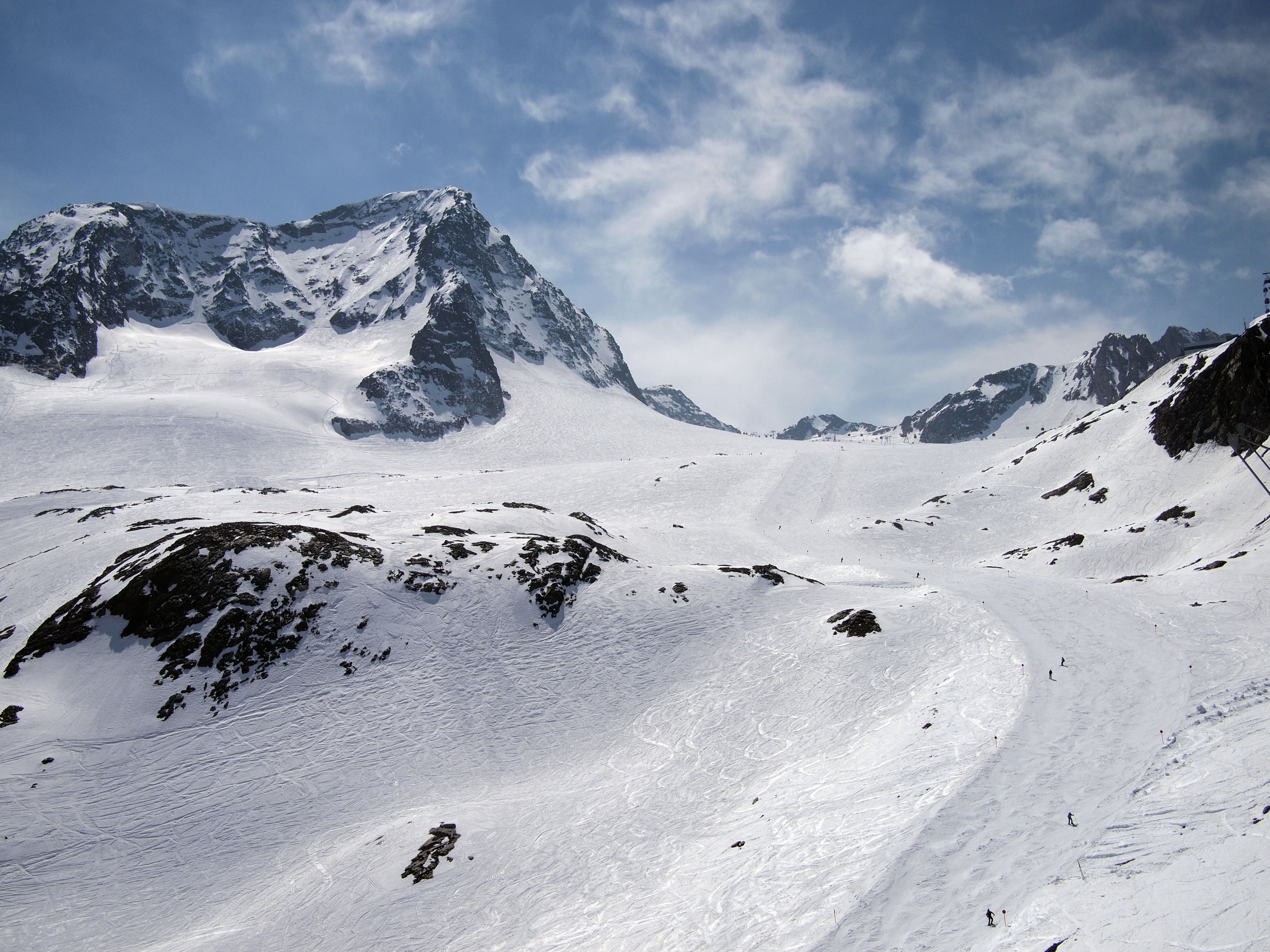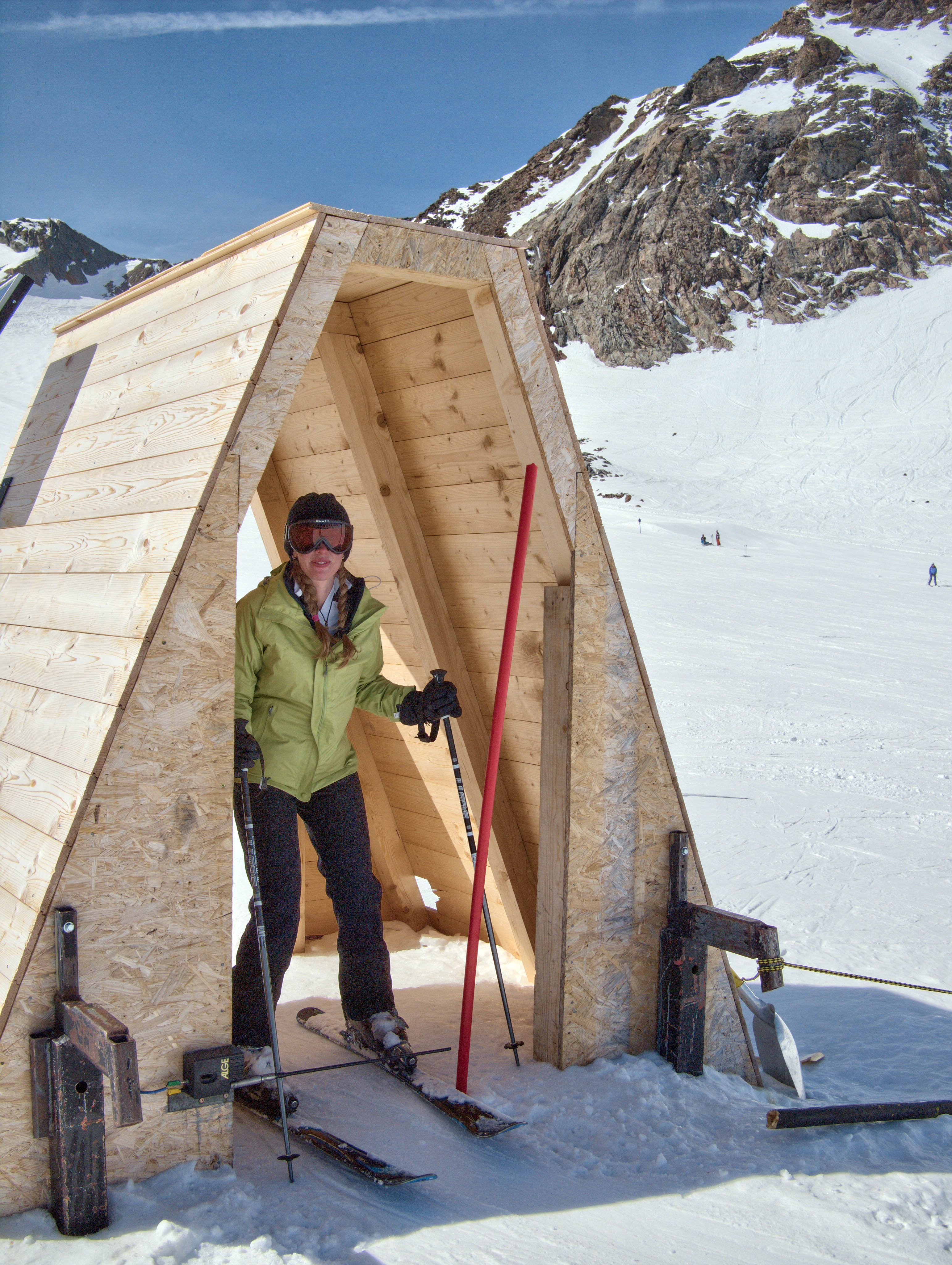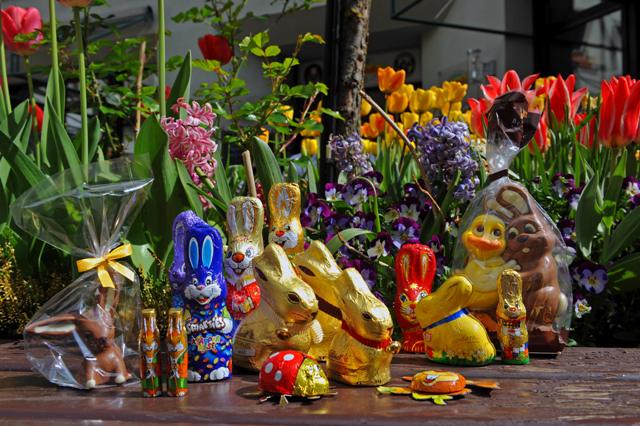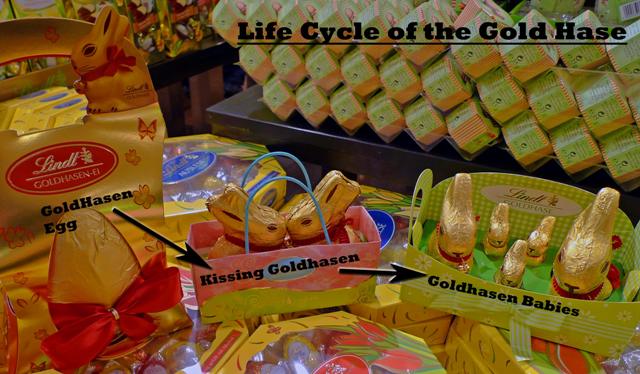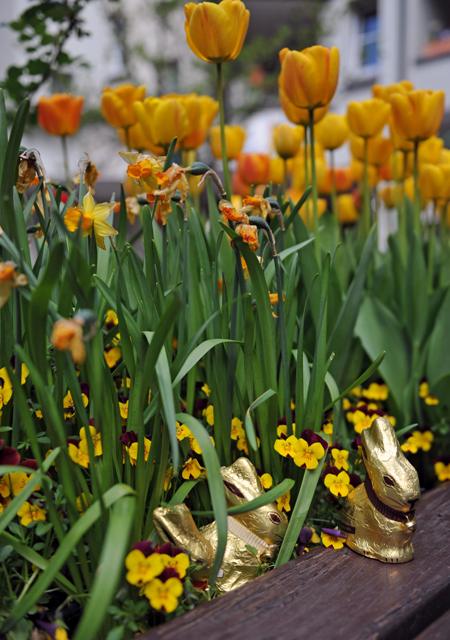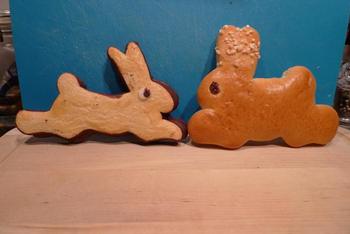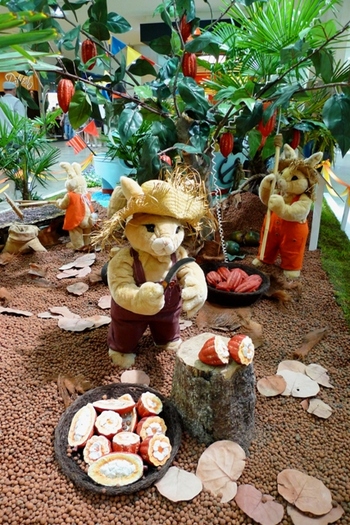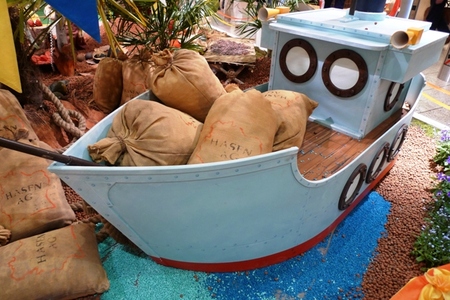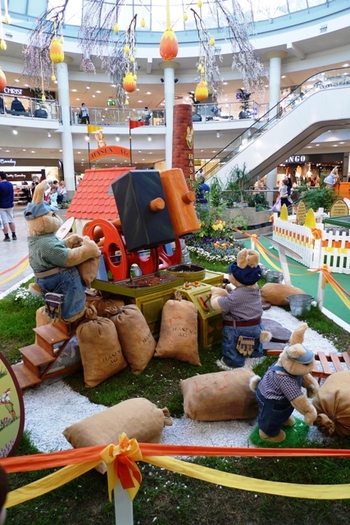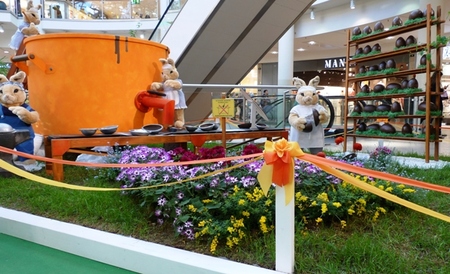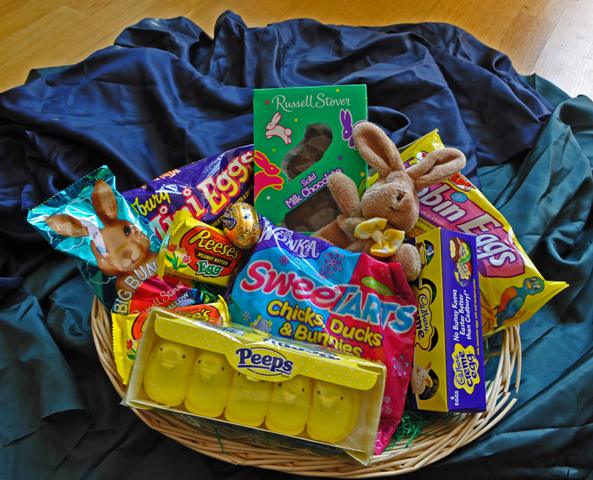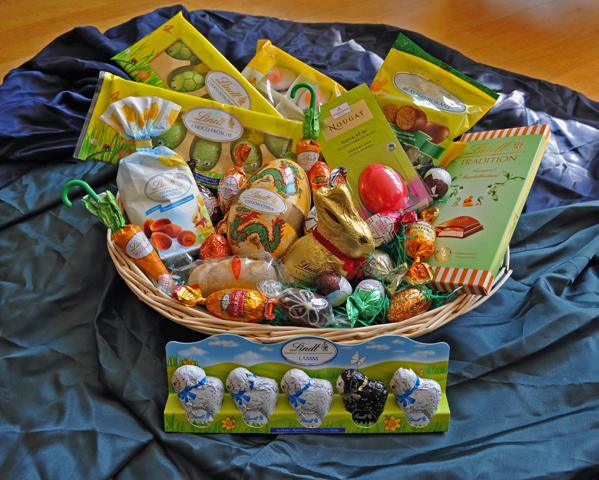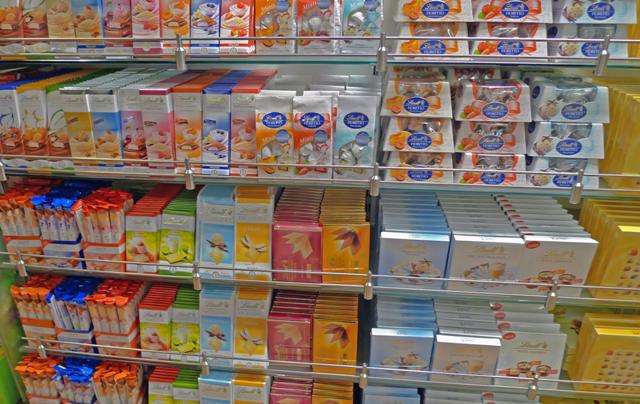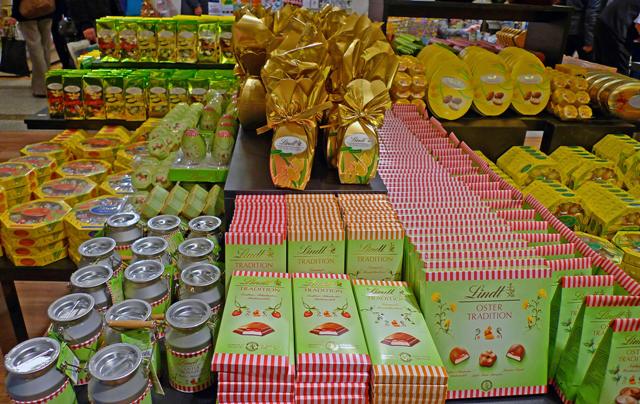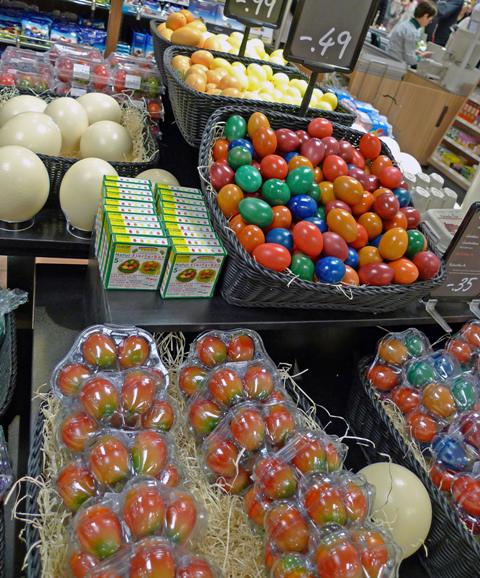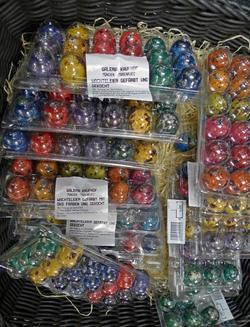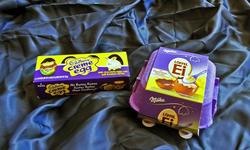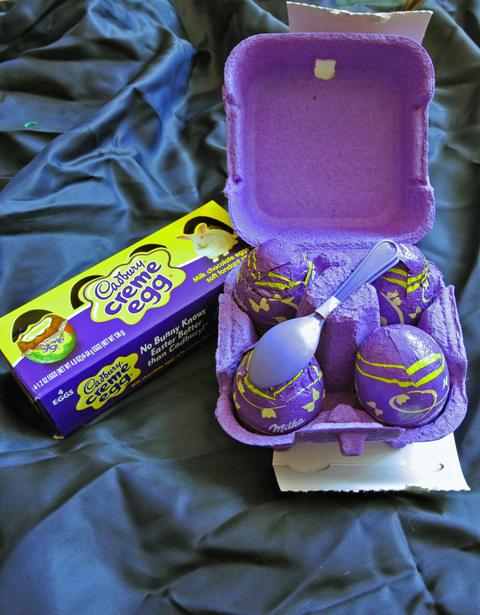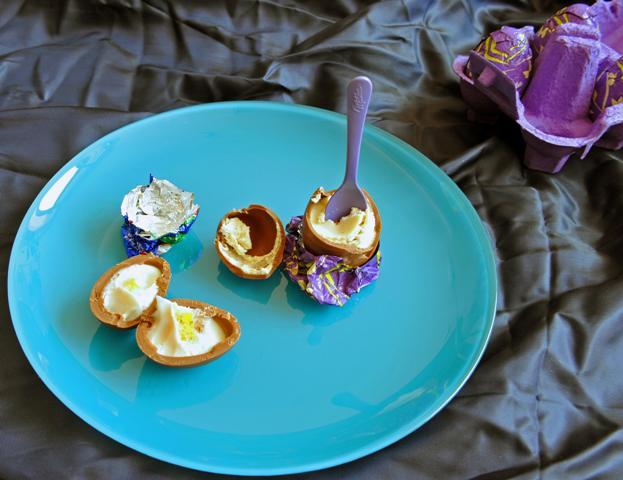Munich Day Trip - hiking in Kufstein (Austria)
 Saturday, April 30, 2011 at 8:00
Saturday, April 30, 2011 at 8:00 We've previously blogged about our winter sledding day-trip to Kufstein in Austria. It's close to Munich, has beautiful mountain views, and of course hiking up and sledding down. Perfect for a Saturday or Sunday.
I will be taking Frau A back this summer too, because it only gets better. Snow is nice, but now we'll get the classic fir trees and meadow flowers in the Tirolean Alps. Pictured below, I'm looking back north onto the mountains of the Wilder Kaiser which are actually located in Germany. The trail has a lot of nice viewpoints like this, looking down into the valley and small village below. Shorts are fine for hiking here when the weather is good; I take a fleece for when the sun hides or wind comes up at altitude, and water in the backpack until we reach the hut.
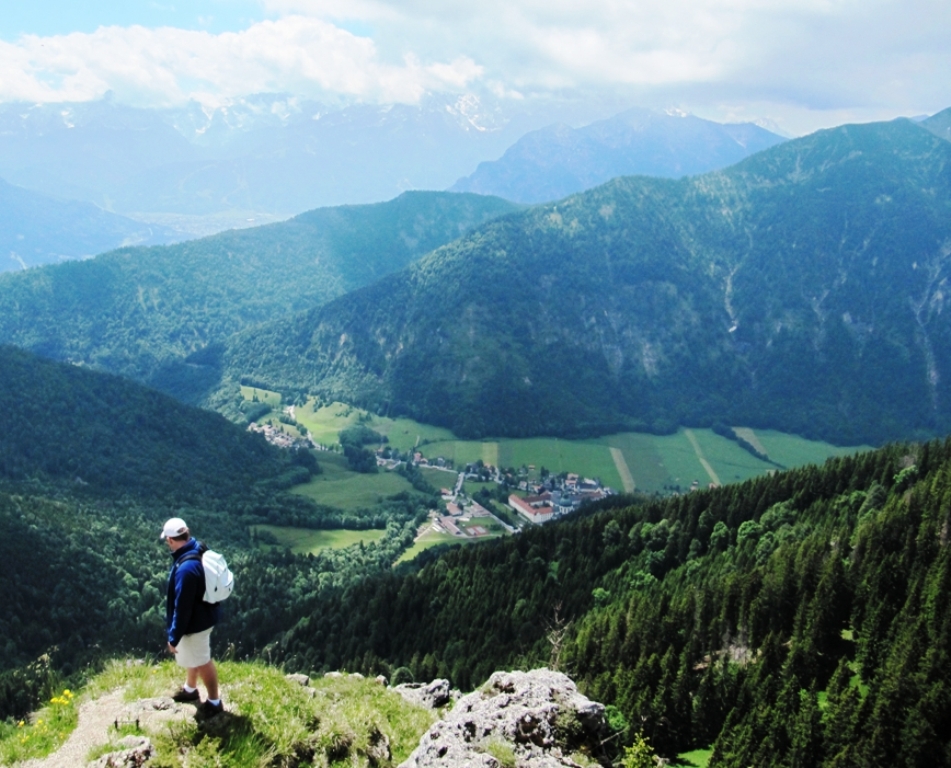
Further along the path you get a more extended view of the valley, again the Wilder Kaiser in the distance, and a small river running through the town now. I think this water eventually connects with the Isar on it's way to Munich. As the sun burns off the morning haze the peaks get a little sharper in the distance. Nice view.
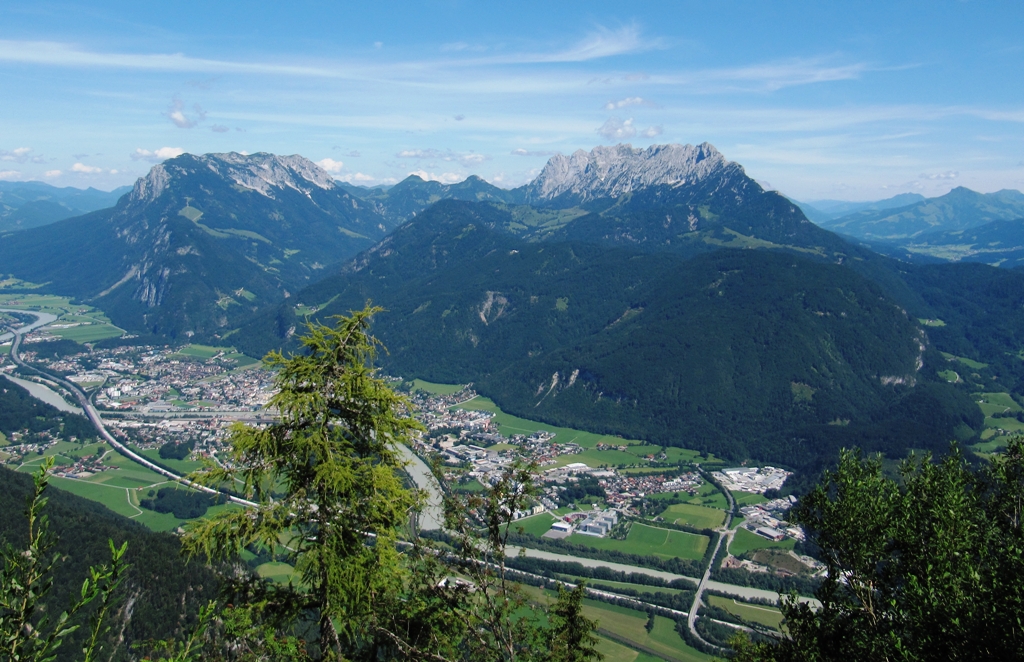
This time, before reaching a hut, we go up to a peak called the Pendling Gipfelkreuz (gipfel = peak and kreuz = cross). Not a really high destination relative to most in the Alps, but feels great to be on top. The fleece is off at this point - worked up a sweat on the last incline. Even changed baseball hats!

Not far from the summit is the Pendlinghaus (also known as Kufsteiner Haus, see the yellow sign above the door), another typical hut that offers food and drink to hikers. The sign in the foreground says "wilkommen" -- welcome. Now if you look closely at the antenna on the house, you'll see a glider behind it! The pilot was circling around for over a half-hour and would zoom past the house, so I was able to snap the photo just as he passed my field of view. On the right, you can see the same valley as the previous photogtraph. That's the view when you have lunch here. And you can rent a room for overnight too! But I didn't eat here, because I wanted to get back to the hut from our winter hike, the Kala Alm.

So I headed back toward the Kala Alm, where we rented the sleds in winter. It was in the Spring, and some peaks still had their snowcap. In this direction we are seeing the Tirolean Alps vs. the Wilder Kaiser range in the previous photos. They are a little larger and more dramatic.

When you arrive at the Kala Alm, it looks basically the same this time, just no snow. People outside having food and drink, enjoying the weather... but then you notice something. They can't rent sleds without snow, but they can rent Mountaincarts! There's a whole row of them on the right below. (Actually, you can still see some residual snow too, the last remnants of winter up here.)
A mountain cart is like a Big Wheel for grown-ups. German (Austrian?) engineered, they are not powered (gravity is all you need, and more) but the do have two hand brakes like on a bicycle. The right brake works the right rear wheel, the left brake the left rear wheel. Therefore, they're not just for reducing speed, but to help navigate the winding corners of the path down. When you slightly brake a wheel, it rotates more slowly than the other wheel does, therefore your cart will turn in that direction. Brake a little with the right, you will will get a little help turning right. The best riders use this to literally "skid" through the corners. It is so much fun.
The two photos above are taken from (and link to) a site with more Mountaincart information. I was too busy having fun to take photos of my own. However, Frau A and I will be back and try to take some video too!
 Herr J ...
Herr J ...  3 Comments
3 Comments 





